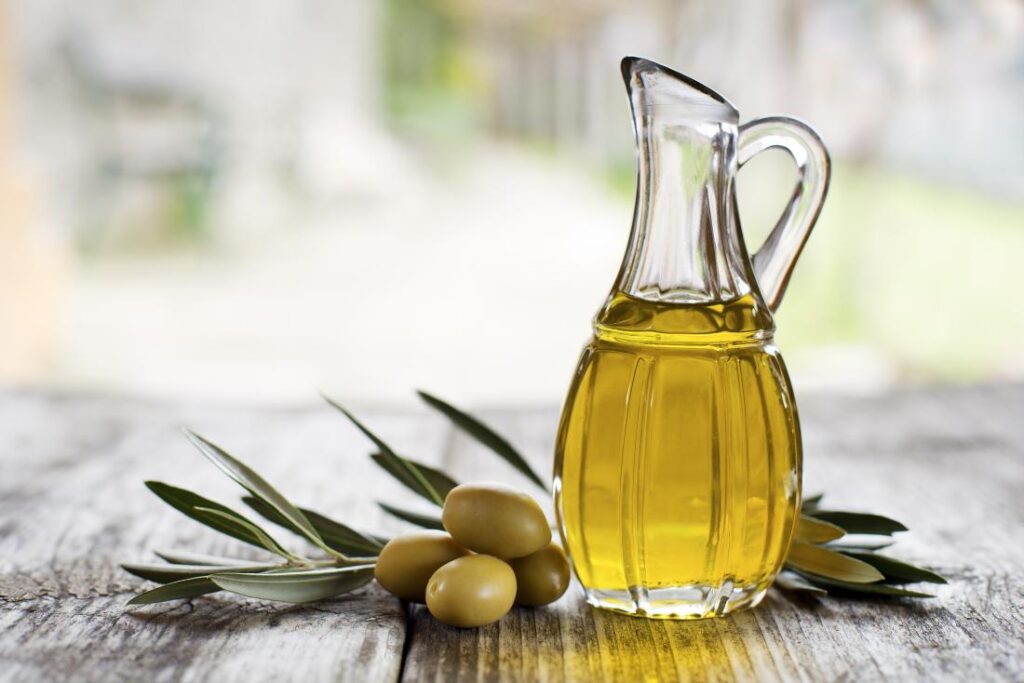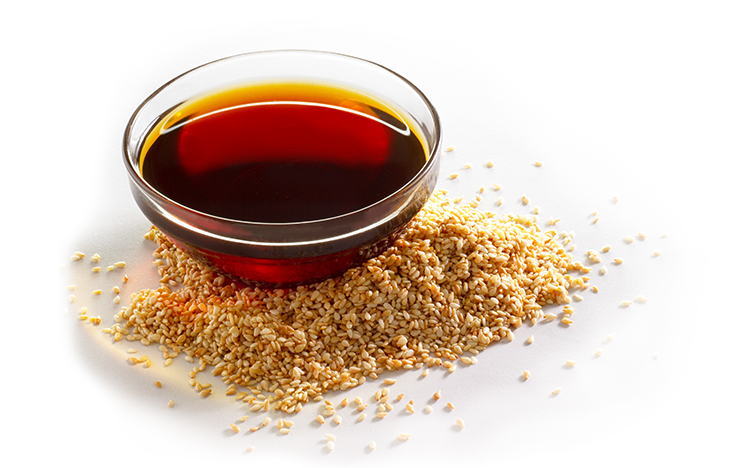The majority of people frequently use cooking oils since they may be used to make a variety of foods, including meat, eggs, vegetables, sauces, and some grain meals. The topic of selecting healthy oils is frequently discussed.
Nevertheless, an oil’s healthfulness as it sits on the grocery store shelf is only one aspect of the tale. Whether the oil is still safe to ingest after being heated during cooking is another crucial factor to take into account. Because cooking oils have a range of smoke points, or temperatures at which they become unstable, this is the case. Oils should not be used for cooking at temperatures higher than their smoke point.
The body needs dietary fats to function properly. The body can absorb vitamins A, D, E, and K thanks to the fats in meals. They are also necessary for the proper operation of the nervous system. The addition of healthy oils to the diet is advised by the 2020–2025 Dietary Guidelines for Americans in order to support a healthy body weight and lower the risk of heart disease. Olive, coconut, canola, and vegetable oils are just a few of the numerous options available. These oils each have distinctive qualities.
This article examines healthful cooking oils that can tolerate high heat in alongside the other oils you should avoid.
Why High-quality Cooking Oils Matter
Cooking oils ultimately reach their smoke point when heated, especially at high temperatures. At this temperature, the oil loses its stability and starts to degrade. Oil oxidizes and releases free radicals when it decomposes. These substances might harm cells, which could result in disease development and have detrimental effects on health.
Acrolein, a chemical released by oils when they reach their smoke point, can impart an unappealing burnt flavor. Acrolein in the air may also be harmful to your lungs. A cooking oil’s quality can be impacted by how much processing it has gone through, therefore this is another vital factor to take into account.
Oils that have undergone minimum processing may contain sediment particles, have a cloudier look, and retain more of their natural flavor and color than oils that have undergone high levels of processing, which are more expensive and have a uniform appearance. Compared to highly processed cooking oils, unrefined oils may be higher in nutrients, but they are also more heat-sensitive and more likely to go rancid. Unrefined oils typically have lower smoke points compared to refined oils .
Some refined oils are obtained through the pressing of seeds or plants, while others are obtained through the use of chemical solvents. Many people who value their health avoid chemically extracted oils in favor of pressing-produced oils like cold-pressed olive oil.
Remember that the amount and types of fatty acids present in oils from various sources might fluctuate greatly depending on the source. This may have a considerable impact on their health impacts. The use of refined, unrefined, and oils with various smoke points each has advantages and disadvantages.
Nutritional Values
The United States Department of Agriculture’s following table compares the nutritional content of one tablespoon (tbsp.) or fifteen milliliters (ml) of olive oil, coconut oil, canola oil, and vegetable oil in grams (g). These oils don’t contain trans fat, a form of fat that is bad for people’s health. Each tablespoon of vegetable, canola, olive, and coconut oils has the same number of calories.
| Olive oil (1 tbsp.) | Canola oil (1 tbsp.) | Vegetable oil (1 tbsp.) | Coconut oil (1 tbsp.) | ||
| Calories | 126 | 126 | 126 | 125 | |
| Total fat | 14 g | 14 g | 14 g | 14 g | |
| Saturated fatty acids | 2.17 g | 0.93 g | 1.92 g | 11.6 g | |
| Monounsaturated fatty acids | 9.58 g | 8.76 g | 5.64 g | 0.88 g | |
| Polyunsaturated fatty acids | 1.33 g | 3.54 g | 5.64 g | 0.24 g |
The main distinction between each of these four oils is seen in their fat composition:
- Monounsaturated fats are more abundant in extra virgin olive oil.
- The largest concentrations of saturated fats are seen in organic virgin coconut oil.
- Per tablespoon, pure vegetable oil contains the greatest polyunsaturated fatty acids.
Here are some healthy cooking oils
Olive Oil
The typical cooking temperature for many recipes, especially those for baked products, is 350°F (176°C), which is close to olive oil’s smoke point. The preferred cooking oil in kitchens all across the world for a very long time has been olive oil. This is largely a result of its adaptability. You can bake, sauté, or make cold dressings with it. It has a mild peppery or grassy flavor.
Vitamin E, which functions as an antioxidant, is abundant in olive oil. The main fatty acid in olive oil is oleic acid, a monounsaturated lipid that may have anti-inflammatory and anti-cancer characteristics, according to research. Oleuropein and oleocanthal are two further antioxidant substances found in olive oil. They could have anti-inflammatory effects, such as preventing the oxidation of LDL (bad) cholesterol.
According to researchers, olive oil includes components that are good for your heart and may help you avoid diseases like obesity, metabolic syndrome, and type 2 diabetes.

Canola Oil
Unsaturated fats make up a large portion of canola oil, while saturated fatty acids are scarce. Canola oil’s positive effects on health were examined by a team of experts from Manitoba’s Department of Food Science and Human Nutritional Sciences.
Their findings showed that persons who follow diets based on canola oil have lower overall cholesterol levels than those who consume a conventional Western diet rich in saturated fatty acids. Comparing canola oil to a typical Western diet, the researchers found that canola oil could lower LDL cholesterol levels by an average of 17%.
Because it contains relatively few polyunsaturated fats, canola oil is frequently recommended as one of the better cooking oils. Vegetables, meat, or meat substitutes can be swiftly sautéed in canola oil, as long as the oil is not allowed to get too hot.

Sesame Oil
The smoke point of sesame oil is medium-high, at about 410°F (210°C). The heart-healthy antioxidants sesamol and sesaminol, which are abundant in it, may offer a number of advantages, including potential neuroprotective actions against certain disorders like Parkinson’s.
Also, a small study conducted on 46 persons with type 2 diabetes indicated that consuming sesame oil for 90 days dramatically improved long-term blood sugar management biomarkers and fasting blood sugar levels. Sautéing, basic cooking, and even salad dressing are all excellent uses for sesame oil. A variety of stovetop meals might benefit from its mild nutty flavor.
Be aware that toasted sesame oil is distinct from regular sesame oil. The latter is better suited for finishing a dish rather than preparing one because it has a more pronounced nutty flavor.

Avocado Oil
Due to its high smoke point of about 520°F (271°C), avocado oil is perfect for high heat culinary methods like deep frying. You can use it similarly to olive oil and it has a taste that is balanced and a little like avocado. With a high proportion of the heart-healthy lipid oleic acid, it also offers a nutritional profile that is comparable to that of olive oil.
Avocado oil may even be helpful for easing achy joints’ inflammatory discomfort, improving the absorption of other nutrients, and shielding cells from oxidative stress. Compounds in avocado oil may help lower blood pressure, LDL (bad) cholesterol, and triglycerides, all of which are associated with an increased risk of heart disease, according to certain animal studies.
Its nutritional value is maintained both at low and high temperatures, according to one evaluation. The site the avocados were grown and the method of extraction are two of the many variables that affect the quality and nutritional content of avocado oil.

Safflower Oil
Safflower oil has a higher smoke point than other types of oil, which is around 510°F (265°C). The seeds of the safflower plant are used to make safflower oil. It has fewer saturated fats and more unsaturated fatty acids than other foods.
According to a study, postmenopausal women with obesity and type 2 diabetes who use safflower oil daily may have better inflammation, blood sugar control, and cholesterol levels.

Coconut Oil
Many people think coconut oil is a good fat that helps heart health. Due to the extremely high concentrations of saturated fatty acids found in coconut oil, these health claims have sparked discussion in the scientific community.
On some commercial websites, it is claimed that coconut oil functions differently from other oils that contain significant amounts of saturated fats. They assert that coconut oil and medium-chain triglycerides share characteristics. Because they are digested and absorbed by the body more quickly than long-chain fatty acids, these medium-chain fatty acids are healthy. They are therefore more effective as an energy source than long-chain triglycerides.
Nevertheless, the majority of the fat in coconut oil is lauric acid, a long-chain triglyceride that lacks the same health advantages as medium-chain triglycerides.
Researchers found that coconut oil raised LDL cholesterol levels in comparison to safflower and olive oils in a review of studies comparing the effects of coconut oil versus vegetable oil. According to a 2018 study, coconut oil improves HDL cholesterol, or “good cholesterol,” more than butter and olive oil.
Nonetheless, the AHA suggests that consumers restrict their use of saturated fats, such as coconut oil, in light of the overall data conducted so far. To fully understand the effects of coconut oil on health, more research is required.

Takeaway
Dietary fats are necessary for a wholesome, high-quality diet. Oils offer healthy fatty acids. The fatty acid profiles of the various oils we examine in this article vary.
Oils with a higher content of unsaturated fatty acids may offer certain health advantages. Consumers need to be aware of the various cooking techniques because they can alter the beneficial qualities of oils.
References
Lin L, Allemekinders H, Dansby A, Campbell L, Durance-Tod S, Berger A, Jones PJ. Evidence of health benefits of canola oil. Nutr Rev. 2013 Jun;71(6):370-85. doi: 10.1111/nure.12033. Epub 2013 May 2. PMID: 23731447; PMCID: PMC3746113.
Eyres L, Eyres MF, Chisholm A, Brown RC. Coconut oil consumption and cardiovascular risk factors in humans. Nutr Rev. 2016 Apr;74(4):267-80. doi: 10.1093/nutrit/nuw002. Epub 2016 Mar 5. PMID: 26946252; PMCID: PMC4892314.
Khaw KT, Sharp SJ, Finikarides L, Afzal I, Lentjes M, Luben R, Forouhi NG. Randomised trial of coconut oil, olive oil or butter on blood lipids and other cardiovascular risk factors in healthy men and women. BMJ Open. 2018 Mar 6;8(3):e020167. doi: 10.1136/bmjopen-2017-020167. PMID: 29511019; PMCID: PMC5855206.
Tripoli E, Giammanco M, Tabacchi G, Di Majo D, Giammanco S, La Guardia M. The phenolic compounds of olive oil: structure, biological activity and beneficial effects on human health. Nutr Res Rev. 2005 Jun;18(1):98-112. doi: 10.1079/NRR200495. PMID: 19079898.

Wow this is beautiful
I learnt a lot